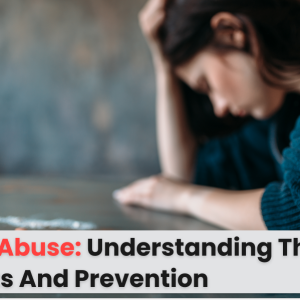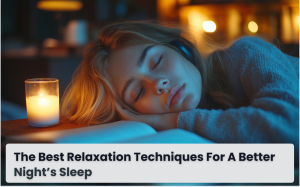
The Best Relaxation Techniques for a Better Night’s Sleep
In today’s busy world, getting a good night’s sleep can often feel like an elusive goal. Stress, anxiety, and the fast pace of life in the USA and Canada can all interfere with our ability to unwind and rest. However, the quality of your sleep significantly impacts both your mental and physical well-being, and relaxation techniques can play a key role in helping you achieve restful sleep. By practicing relaxation methods before bedtime, you can calm your mind, reduce stress, and create the ideal conditions for a peaceful night’s rest. Here are some of the best relaxation techniques for improving sleep.
Progressive Muscle Relaxation (PMR)
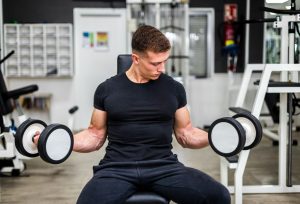
Progressive Muscle Relaxation is a technique designed to reduce physical tension and promote a sense of calm. By tensing and then relaxing different muscle groups, you allow your body to release any built-up stress, preparing you for a restful night of sleep.
How to Practice:
- Lie down comfortably in your bed.
- Starting from your feet, tense your muscles for 5-10 seconds, then relax them.
- Gradually move upward through your body, working through your legs, abdomen, arms, shoulders, and head, tensing and relaxing each muscle group.
- Focus on the sensation of relaxation that follows each tensing action.
PMR is especially effective for people who have trouble relaxing due to physical tension or stress.
Mindful Breathing

Mindful breathing is one of the easiest and most effective techniques to calm the mind and body before bed. It encourages slow, deep breathing that helps lower heart rate and reduce stress, making it easier to fall asleep.
How to Practice:
- Lie on your back in a comfortable position.
- Inhale slowly through your nose for a count of 4, filling your lungs completely.
- Hold your breath for a count of 4, then exhale slowly through your mouth for a count of 6.
- Repeat this process for 5-10 minutes, focusing on the rhythm of your breath.
Mindful breathing reduces anxiety and helps create a calm, focused state of mind that promotes better sleep.
Visualization

Visualization involves mentally transporting yourself to a peaceful place to help induce relaxation and sleep. This technique uses the power of your imagination to create calming images and sensations, allowing you to let go of stress and unwind.
How to Practice:
- Lie down in bed, close your eyes, and take a few deep breaths.
- Imagine a serene location, like a quiet beach, a forest, or a mountain retreat.
- Focus on the details of this place—what it looks like, how it smells, and the sounds around you.
- Allow yourself to fully immerse in this calming mental space.
Visualization helps your mind shift away from worries and into a relaxed state, making it easier to fall asleep.
Guided Meditation
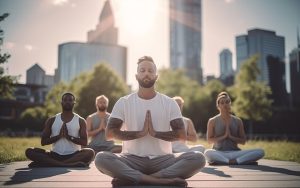
Guided meditation can be an excellent way to relax before bedtime, especially if you’re new to meditation. It involves following a recorded voice that leads you through a series of calming prompts, such as breathing exercises, body scans, or mental imagery.
How to Practice:
- Find a guided meditation specifically designed for sleep (many apps and online platforms offer them).
- Lie down comfortably, close your eyes, and follow the voice as it guides you through relaxation techniques.
- Focus on your breath, the words, and the sensations in your body as the guide helps you transition into a calm, restful state.
Guided meditation is particularly helpful for quieting an overactive mind, making it easier to relax and drift off to sleep.
The 4-7-8 Breathing Technique

The 4-7-8 breathing method is a popular relaxation technique that helps regulate breathing patterns, reduces anxiety, and promotes sleep.
How to Practice:
- Lie in bed with your eyes closed.
- Inhale quietly through your nose for a count of 4.
- Hold your breath for a count of 7.
- Exhale completely through your mouth, making a whooshing sound, for a count of 8.
- Repeat the cycle at least four times.
The 4-7-8 technique slows down your breathing, calms the nervous system, and prepares your body for sleep.
Autogenic Training

Autogenic training is a relaxation technique that helps induce a state of calm by focusing on sensations of warmth and heaviness in different parts of your body. This method trains your body and mind to relax deeply, which can lead to better sleep.
How to Practice:
- Lie down comfortably in a quiet place.
- Close your eyes and focus on each part of your body, starting with your feet.
- Silently repeat phrases like “My feet are heavy and warm” or “My arms are relaxed and heavy.”
- Continue this process, moving upward through your legs, abdomen, chest, arms, and head.
This method calms the body by helping you mentally relax and release tension in each area, promoting sleep.
Aromatherapy

Using essential oils, such as lavender or chamomile, for aromatherapy can be a powerful way to relax your mind and body before bed. These scents have calming properties that can reduce anxiety and promote sleep.
How to Practice:
- Add a few drops of lavender essential oil to a diffuser in your bedroom.
- Apply diluted essential oil to your wrists, neck, or pillow.
- Take deep breaths and allow the calming aroma to help you relax.
Aromatherapy can create a serene environment that helps your body transition into a state of restfulness, making it easier to fall asleep.
Yoga for Sleep
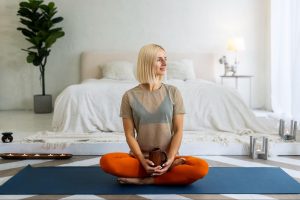
Gentle yoga poses can help relax your body and release tension before bed. This practice helps stretch out tight muscles, reduce stress, and prepare the body for restful sleep.
How to Practice:
- Focus on gentle poses like Child’s Pose, Legs-Up-the-Wall Pose, and Corpse Pose.
- Move slowly through the poses, holding each one for 30-60 seconds.
- Breathe deeply and relax into each pose, focusing on releasing tension with every exhale.
Incorporating a few gentle yoga stretches into your nighttime routine can help quiet the mind and body, leading to better sleep.
Journaling

Journaling before bed allows you to express and release any worries or thoughts that might keep you awake. Writing down your thoughts can help you process emotions and create a sense of closure before the day ends.
How to Practice:
- Set aside 10-15 minutes before bed to write.
- Write about your day, any thoughts or feelings you have, or create a gratitude list.
- Avoid over analyzing or judging your writing—just let your thoughts flow.
Journaling can serve as a mental release, helping you clear your mind of stressors that might otherwise interfere with sleep.
Listening to Relaxing Music or Nature Sounds

Listening to calming music, white noise, or nature sounds can help create a peaceful environment that promotes relaxation. The right sounds can lower your heart rate and calm your mind, making it easier to fall asleep.
How to Practice:
- Choose soothing music or natural sounds that you find calming (many apps and playlists are available for sleep).
- Play the sounds at a low volume as you prepare for bed.
- Focus on the rhythm and melody, allowing it to guide you into a relaxed state.
Music or nature sounds can drown out any distractions, helping you to unwind and ease into sleep.
Summary: Best Relaxation Techniques for a Better Night’s Sleep
In today’s fast-paced world, especially in the USA and Canada, achieving a restful night’s sleep can be a challenge. Relaxation techniques like Progressive Muscle Relaxation (PMR), mindful breathing, yoga, and aromatherapy can help calm your mind and body. Whether you’re reducing muscle tension, quieting your thoughts, or creating a serene environment, these techniques can make a significant difference in improving your sleep quality and overall well-being.
For more tips on managing sleep disorders or creating a relaxing bedtime routine, be sure to check out our other helpful resources.


